Sharlyn J. Lauby's Blog, page 78
September 3, 2020
8 Tips for More Productive Meetings
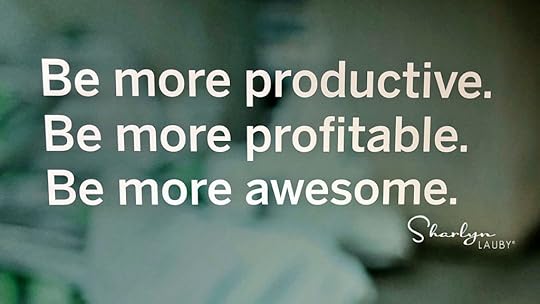
When you work in an office environment, you attend a lot of meetings – many of them were routine like staff meetings or safety meetings, etc. I think one of the reasons that people like working from home is that they don’t have to attend as many meetings. Especially, poorly planned meetings.
Don’t get me wrong. I don’t mind meetings. Let me rephrase that – I don’t mind productive meetings. The real key to a successful meeting is planning. If you really take the time to plan and prepare, it has a definite impact on attendee participation and the outcome of the meeting. Here are my 8 planning tips that help me conduct a productive meeting:
Only have meetings when necessary. I know this sounds like a no brainer but, there are lots of people who call meetings for everything. Don’t call a meeting when a phone call will do. Or say you need to have a meeting to avoid dealing with an issue. There are only three real reasons to have a meeting: to convey information, to identify problems, and to make decisions.
Invite the right people. Yes, this sometimes means inviting the devil’s advocates and naysayers. Make sure the people who need to be in the room are there. And don’t add to the confusion by inviting people who don’t need to be there. Meetings aren’t popularity contests.
Pick the proper date/time/location. When I worked in hotels, no one scheduled meetings at 3:00 p.m. Why? That’s the typical check-in time. The lesson? Understand the right time to have meetings. And don’t hold a meeting at a time or date because you know someone won’t be able to attend (not that anyone would do that).
Choose the right venue. Remember that famous scene from the movie Jerry Maguire where he is fired in a restaurant? Some conversations are fine at restaurants, but some aren’t. I once sat on a board that wanted to hold meetings at a restaurant. The meetings were worthless from a ‘get things done’ standpoint because everyone was focused on eating and chatting. Who wants to second a motion when they have a mouthful of disco fries?!
Create an agenda. Tell people why you want to have a meeting. It gives participants time to prepare, do research, and think about their viewpoint on the issues being discussed. It also allows you to hold people accountable for arriving prepared. The only way you can get something accomplished is by having people come prepared. Oh, and be sure to actually stick to the agenda.
If you expect others to talk or present, tell them. In advance. When you put out that agenda, let the participants know if you expect something from them. If you want a person to bring the latest data, let them know. If you want people to come prepared to make a decision, tell them. I recall a meeting where a board president asked me to present a proposal during a meeting – it completely threw me off guard because I had no forewarning whatsoever.
Keep minutes. Creating a record of what action was taken and what needs to be done is important. I’m a big fan of using SMART goals in creating minutes. It not only provides a record of what will be done but who is responsible for it and when it will be completed. Then, the SMART plan becomes a working document. And it’s terrific for accountability.
Follow up after the meeting. Minutes should be sent in a timely fashion so people can start working on action items. Let participants know you’re available if they need help, resources, or just a sounding board.
Sometimes the phrase “let’s meet about this” sounds so casual that it might send the message that meetings are easy. Truth be told, meetings are hard work. At least when they’re done right. The good thing about these tips is that they can be applied to in-person and virtual meetings. Creating meeting consistency is good for business.

The post 8 Tips for More Productive Meetings appeared first on hr bartender.






September 1, 2020
Create a Learning Organization with These 4 Skills Based Activities

(Editor’s note: Today’s post is brought to you by our friends at Paycom, a leading provider of cloud-based human capital management software. Paycom employees have donated more than $150,000 to community organizations such as Paralyzed Veterans of America, Project Aware, the Regional Food Bank of Oklahoma, and numerous health care nonprofits. A big thanks for their generosity and enjoy the article.)
In the book The Fifth Discipline, author Peter Senge introduces a concept called the “learning organization”. A learning organization is a company that facilitates learning within its culture and, through that process, continuously transforms itself. It’s this type of culture that allows organizations to grow both in terms of the products and services they provide and the talent they attract. Some companies that have been considered learning organizations include Apple, Toyota, and General Electric.
Senge identified five essential elements to becoming a learning organization: systems thinking, personal mastery, mental models, shared vision, and team building. While all of these components are equally valuable, let’s focus on one aspect – personal mastery. In particular, skills mastery.
4 Ways to Achieve Personal Skills Mastery
Before we talk about how to achieve personal mastery, let’s talk about what skills are. I’ve mentioned before how the terms knowledge and skills are often used interchangeably. And the vast majority of the time, that’s probably okay. But when we’re talking about learning, understanding the definition of a skill is important because it drives how mastery is achieved.
Skills are proficiencies developed through training or experience. Skills are not the theoretical understanding of a topic (that’s knowledge). Obtaining personal mastery involves having a self-awareness of the skills we possess and need, coaching and feedback about our performance, and lifelong learning. There are four primary learning processes where we gain mastery.
Retraining provides training (again) to workers. It often takes place after a merger, acquisition, or restructuring. An example might be retraining the accounting team on a new procedure for processing expense reports. They already know how to process reports, but they need retraining on the new way.
Upskilling is the process of acquiring new skills. It’s typically related to the job that the employee currently holds – for example, a programmer learning a new computer software program.
Reskilling involves learning new skills, but it’s usually for the purpose of transitioning to a new role. It could be for a promotional or lateral opportunity such as an administrative assistant learning how to code or an accounts payable clerk learning payroll.
Development takes place when an individual gains new knowledge and skills for the purpose of transitioning into a role of greater responsibility (i.e. management development). Often, when we think of development, it could involve multiple roles over the long term.
All of these learning processes are effective. The key is for HR departments, managers and employees to build these activities into their overall learning strategy. HR departments should have learning strategies that align with the goals of the business. Managers need to have learning strategies, so employees are able to perform at a high level. And employees want personal learning strategies to accomplish their career goals.
Technology Can Deliver Skills Based Learning
The good news is that all of these learning activities – retraining, upskilling, reskilling, and development – can be delivered through the use of technology. Here are three common technology learning methods.
E-learning is a concept we’ve all heard of. While its popularity waned in the ‘90s, the introduction of massive open online courses (aka MOOCs) brought e-learning back to the forefront. Personally, I believe the popularity of social media has also contributed toward making e-learning courses more interactive and engaging. Participants can gain global viewpoints and diverse feedback.
Self-directed learning is receiving a lot of attention these days. With an increased number of employees working remotely, self-directed learning allows employees to create their own learning plans that will meet their learning needs. The result can not only be personal skills mastery, but increased confidence and elevated overall performance.
Microlearning focuses on creating short, succinct pieces of content. Think activities less than five minutes in length. Not everything we have to learn takes a long time to master. In addition, it’s possible that the best way to master a skill is to learn it in small chunks. (I’m reminded of Bloom’s Taxonomy.) Microlearning is a great way to space out skills mastery over time for maximum retention.

Regardless of what’s happening in the job market or the economy, an organization’s competitive advantage is in its talent. That means talent development strategies, such as becoming a learning organization, are a key component to organizational success.
Organizations must consider how employees will gain skills mastery and put the infrastructure in place to make that happen. That includes learning activities, management support, and technology.
If you want to learn more about how technology can enhance your learning strategy, I hope you will join me and the Paycom team on September 17, 2020 at 2p Eastern for the webinar “Strategic HR Planning: Education as a Key Organizational Strength”. As always, if you’re already booked during that time, sign up anyway and get notification of the recording. And FYI – the program will be eligible for professional development credits (PDCs) from the Society for Human Resource Management (SHRM). Look forward to seeing you there!
The post Create a Learning Organization with These 4 Skills Based Activities appeared first on hr bartender.






August 30, 2020
Deliberate Practice: Make It Part of Your Professional Development

If there are any bright sides to sheltering-in-place, it’s been that we have time to learn new things. I’ve heard many of my friends talk about taking a massive open online course (MOOC) or attending a few more webinars than they usually do. Which is great. We should always try to carve out time to learn.
But Bloom’s Taxonomy tells us that we might not retain information if we simply read or listen to material without adding an element of practice. I know from experience that this is true when I try to learn a new language. Without someone to speak French with, retention fades over time.
During O.C. Tanner’s Influence Greatness conference a couple of years ago, I had the opportunity to hear Angela Duckworth talk about her book “Grit: The Power of Passion and Perseverance”. One of the concepts she shared was the notion of deliberate practice.
Duckworth drew a distinction between deliberate practice and what you might call “fun or casual” practice. That’s not to say that a casual practice isn’t valuable, but her point was that it’s not the same. Deliberate practice is hard. Here are the three steps to the deliberate practice process:
FOCUS. Deliberate practice involves focusing on a specific skill or subskill. For example, a sales professional might want to focus on presentation skills, which are a sub-skill of communication skills.
It’s important to be able to identify the sub-skill, the skill, and the reason you’re focusing on it. For instance, a manager might want to focus on writing skills because they’re a necessary part of the performance review process. Writing skills are a sub-skill of communication skills.
PRACTICE. This step involves being 100% focused on the skill or subskill. Let’s not sugar coat this one. Staying (deliberately!) focused is difficult in today’s technology driven world.
Some tips for staying focused while practicing might include budgeting time on your calendar to practice, turning off devices during practice time, and asking colleagues or family members not to interrupt you during your practice time.
FEEDBACK. Speaking of colleagues, this is the time to ask them for feedback. Whatever skill or sub-skill you’re practicing, my guess is that you’re hoping it’s making a positive impact. So, ask the question.
Be prepared to hear some suggestions and recommendations for improvement along the way. Take that information, reflect on it, and use it to refine your future deliberate practice sessions. This is how we learn in an effective and efficient way.
One of the reasons I like the deliberate practice approach is because we can use it individually and in a group setting. If your organization is doing any type of training program, you can create a wrap-up activity that asks each person to outline their deliberate practice. That way, when participants leave the training session, they have an actionable plan in place to practice. This is what brings value to training and ultimately the bottom-line.
Image captured by Sharlyn Lauby after the SAP Software Conference in Barcelona, Spain
The post Deliberate Practice: Make It Part of Your Professional Development appeared first on hr bartender.






August 27, 2020
The Workplace: How the Pandemic Will Change Things
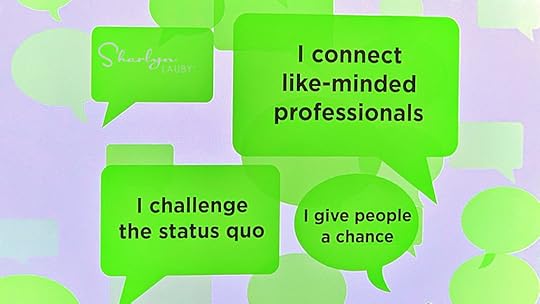
(Editor’s Note: Today’s article is brought to you by our friends at Kronos, a leading provider of workforce management and human capital management cloud solutions. Kronos has introduced employee contact-tracing capabilities for their customers at no additional charge. Check out their COVID-19 Resource Center for details. Enjoy the article!)
The other day Mr. Bartender and I were trying to figure out how long we’ve been masking, sheltering, distancing, etc. While it was difficult to narrow down an exact day, we do know it’s been a long time. Or at least it feels like it’s been a long time. And we’re very aware that we aren’t the only people going through this. And we’re not done yet.
Yes, I know that businesses are starting to reopen. And employees are starting to come back to their workplaces. But the science community is talking about another “wave” so we’re not back to “normal” yet. In fact, it’s possible that it could take a very long time before we return to those pre-COVID days.
I came across a few articles recently on the Workforce Institute at Kronos blog that do a great job of showing the long-term impact that the pandemic will have on business operations. We’re not just talking about the activities specific to COVID, such as 86% of employees believe their employer has an obligation to notify employees who may have been in contact with a coworker who tested positive. It’s possible (no, make that probable) that the way we work could change for the long-term. Here are four articles that illustrate the point.
Re-thinking Office Space in a Post-COVID World
Organizations need to realize is that they have to adapt to change and there is no one-size-fits-all answer. Some employees are very productive working from home while others are looking for that time back in the office to reclaim their productivity. Some managers are totally comfortable managing from afar while others are really struggling to feel connected. Some organizations are open to re-thinking their workplace policies while others want to get back to business as usual. Conversations and planning about how to deal with that change should be happening now so you can take into consideration the desires of the employees, the needs of the business and the productivity of both.
It takes a time of significant crisis – like the one we find ourselves in now – to appreciate how the whole health care system should work with the critical inclusion of public health professionals. Healthcare leaders should SPEAK OUT and SHARE THEIR KNOWLEDGE. They are the experts and know what needs to be done. Our families and friends are looking for that leadership. The safety of our communities and the populations are at stake. Communities should take time to understand and formally integrate public health into daily work not only in healthcare but across all industries.
The Impact of Coronavirus on State and Local Employees
As employees return to the workplace, governments need to take steps to implement policies and procedures to reduce the risk of employees or the public contracting COVID 19. Government leaders need to recognize the impact the pandemic is having on their workforces, especially those in front-facing positions dealing with the public. Managers need the training and tools to ensure that they can manage a remote workforce effectively. Support needs to be provided to employees who are feeling stressed and anxious. This is a time for both compassion and flexibility.
Why Employers Who Prioritize Safety Will Win the War for Talent
Safety is quickly becoming a powerful recruiting and retention tool. It’s the main ingredient that will forge trust between employers and employees during this crisis and in its’ aftermath. This isn’t the first or last pandemic we will experience, and the more trust a company, and its leadership, build during a crisis, the easier it will be to retain employees and build customer loyalty for the future. If companies want to remain competitive, they can’t avoid safety measures and must remember that their employees’ safety is at the core of their business.

Today’s article isn’t meant to paint a picture of doom and gloom. While none of us want to be in this situation, we are learning more about safety, employee engagement, and business productivity. Organizations have the ability to create safe and supportive workplaces. We need to listen to our employees, ask good questions of the experts and put in measurable plans to transform the workplace.
Image captured by Sharlyn Lauby during a presentation at the KronosWorks 2019 Conference in Las Vegas, NV
The post The Workplace: How the Pandemic Will Change Things appeared first on hr bartender.






August 25, 2020
Why Organizations Use Assessments – Ask #HR Bartender
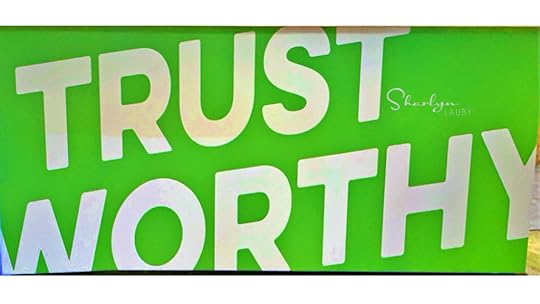
According to the Talent Board’s 2016 Candidate Experience Research Report, 82% of companies use some form of pre-employment test. While I realize that this information is from a few years ago, assessments continue to be widely used. Given their popularity, it’s important for the person taking the assessment to understand its use. That’s what this reader note is all about.
I took one of those behavioral profiles (name withheld) that the HR department from my organization sent me, and I feel seen! In your experience, what does HR/organizations use these tests for? Any ideas? I should have thought about it before submitting the survey, but I somehow felt it was required.
I think this is a great question! That being said, I did redact the name of the profile. Today’s article isn’t about whether the (name withheld) behavioral index is good or bad. But there is an opportunity to talk about the value of assessments in general.
To help us understand more about assessments, I reached out to our friends at Criteria, a leading provider of pre-employment testing services. Josh Millet is the founder and CEO of Criteria. He has extensive experience in online testing services and preparation, and he’s shared his experience with us in the past. I particularly like his comments on this article about “The Top 5 Soft Skills that Employers Should Look For”.
Josh, thanks for taking the time to educate us on assessments. Let’s start with a definition. What’s an “assessment”? And is it different from a “test” or an “index” or a “profile”?
[Millet] An assessment for me is a structured, standardized way of gathering information on someone or evaluating them from a particular perspective. There are many types of assessments: behavioral (personality), cognitive, skills, and emotional intelligence, but based on our definition you could also describe a structured interview as an assessment.
The words “profile and index” tend to be used specifically for personality assessments, whether given pre- or post-hire.
What are the top 3-4 reasons that an organization would use an assessment?

[Millet] In a pre-hire situation, the top reason for using assessments is to make better, more informed hiring decisions that drive business outcomes such as improved productivity and reduced turnover.
Assessments can also help reduce bias by diminishing the importance of selection techniques like resumes and unstructured interviews that tend to introduce subjectivity and unconscious bias into the hiring process. They can also help streamline the hiring process by quickly surfacing candidates more likely to succeed at the ‘top of the funnel’.
In a post-hire context, assessments can help organizations better understand their talent, build better teams, and foster growth and development in their team members.
I’m pretty sure I know the answer to this one but I’m going to ask anyway. Should organizations explain to candidates/employees why they’re using assessments?
[Millet] Absolutely. Organizations should not only explain the reasons for using assessments, but also what the assessments measure and how long they take. Having a clear understanding contributes to an enhanced candidate and employee experience.
Can a candidate/employee ask to see their assessment results?
[Millet] Privacy regulations in certain areas, like the General Data Protection Regulation (GDPR) in Europe, give the candidate the right to see any assessment results, but in the United States it is not standard for employers to share assessment results.
Nevertheless, it is becoming increasingly common for employers and assessment providers to share some feedback with applicants, especially from personality assessments. Criteria launched such a report recently, that an employer can turn on or off. When appropriate, this kind of feedback can improve the candidate and employee experience.

Assessments can make someone nervous. It’s possible that’s where the reader’s comment about feeling it was “required” comes from. As an assessment provider, what words of confidence can you give to someone who is going to take an assessment?
[Millet] In a pre-hire context, assessments give everyone the chance to demonstrate their abilities in a fair and objective way. They are also typically just one of many ways in which employers get to know prospective employees and can help ensure that the fit between a candidate and employer is a good one.
Last question. For organizations that are considering assessments, how can a test save time in the hiring process? (Because on the surface, it might appear like it increases time to hire.)
[Millet] Especially in a time when HR departments are being asked to handle more applicants than ever with fewer resources, assessments can dramatically reduce time to hire. When an employer uses assessments at the ‘top of the funnel’ they can spot talent signals in a large, undifferentiated mass of applicants. This helps them to know where to direct their energies first and can reduce the number of wasted interviews and time spent reviewing applicants who don’t meet the basic job requirements.
A huge thanks to Josh and the team at Criteria for sharing their knowledge with us. If you want to learn more about pre-employment testing, be sure to check out Criteria’s “Definitive Guide to Pre-Employment Testing”. It’s a great resource.
Organizations that use assessments – whether it’s pre- or post-hire – should have a communications plan. Candidates and employees should know what they’re taking and why they’re taking it. It will make them feel more comfortable about the process, which benefits everyone.
Image captured by Sharlyn Lauby after speaking at the Society for Human Resource Management Annual Conference in Las Vegas, NV
The post Why Organizations Use Assessments – Ask #HR Bartender appeared first on hr bartender.






August 23, 2020
What You Need to Know About Voting and Why: #Election2020
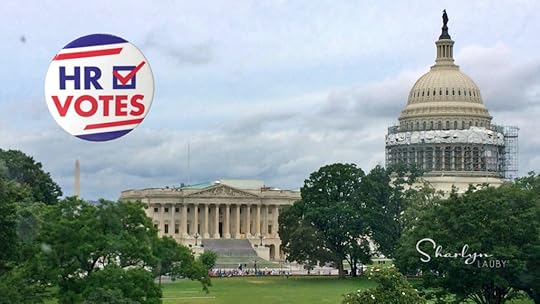
There’s an election coming up in the United States so it’s time for my semi-regular post about the importance of voting. Even if you vote regularly, I hope you will take the time to finish reading today’s article.
I was a political science major in college, so I like reading and staying up on politics and the news. Which I will admit can be a bit challenging at times. A few months ago, Mr. Bartender bought me a book titled “OMG WTF Does the Constitution Actually Say?” by Ben Sheehan. Whether or not you’ve read the Constitution, this is a educational and fun read. It contains both the actual text as well as a casual interpretation. I hadn’t read the Constitution in a long time and it was a good refresher.
Shortly after finishing Sheehan’s book, I heard about another book…this one about voting. Kim Wehle is a professor of law and legal expert. She wrote the book “What You Need to Know About Voting and Why”. Needless to say, I had to get a copy.
I really enjoyed this book for a few reasons. It’s a book that talks about both the mechanics and complexities of voting. The book delves into whether or not we have a “right” to vote, how to qualify to vote, and how voting impacts government. I’ve never questioned my ability to vote ever nor have I ever had anyone question my ability to cast a vote. (Yes, my white privilege is showing.) That’s not the case for everyone and this book does a good job of explaining how voter suppression has happened over time and still exists today. It also talks about money in elections and if you ever wanted to know the difference between individual contributions, political action committees (aka PACs), and Super PACs…this book will clarify it for you.
The book was also helpful in sharing how students can vote when they’re away at school, how older Americans who need assistance can have a caregiver help them vote, and how individuals with disabilities can make sure they’re able to vote with accommodations. Finally, the book offers suggestions about what to do if for whatever reason you’re turned away from a voting precinct (and it could be because of what you’re wearing – and, yes, they can do so legally).
Voting is important. Our votes elect individuals who create laws that impact our personal and professional lives. I’m not just talking about major pieces of legislation like the Americans with Disabilities Act (ADA) or the Family and Medical Leave Act (FMLA). Right now, an elected school board official is deciding whether or not our kids should go back to school in person or online. That’s pretty darn important.
I’m not trying to give you the hard sell on buying this book. I did think it’s really good and it will have a permanent spot on my bookshelf (next to Sheehan’s book about the Constitution). That being said, there is one quote from the book that I want to share.
“As far back as 1886, the Supreme Court has repeatedly declared that the right to vote is ‘fundamental’ because it is ‘preservative of all rights.’ Without the right to vote, individuals can’t hold government officials accountable for breaking other laws.”
Wehle likens our ability to vote with an antibullying policy. If people can bully without consequences, then the “no bullying” policy is meaningless. Same with voting. It’s our accountability tool and without it, government officials could feel – and act – as if they’re above the law.
As in my other election and voting-related articles, I’m not here to tell you how to vote. But I do hope you will take the time to learn the voting laws in your state, get educated on the issues, and make a plan to go vote. What happens in November will have a long-term impact on us as individuals as well as the organizations we work with.
Image captured by Sharlyn Lauby after speaking at the SHRM Annual Conference in Washington, DC
The post What You Need to Know About Voting and Why: #Election2020 appeared first on hr bartender.






August 20, 2020
Company Requests Expense Payment Back – Ask #HR Bartender

Nothing frustrates employees more than when companies mess up their paycheck. Today’s reader note is a perfect example.
Last year, my employer overpaid my travel expenses and I notified the accounting department. They said they would take it from my next salary paycheck, which they did.
Since then, I’ve left the company. Now, I get a letter from the company stating that they overpaid my expenses last year and I owe them the money. As far as I knew, the situation was all clear. In checking my bank statements, I realize that they paid me three times, and only deducted one time.
Do I still owe them this money? There was no mention of it at the time of my resignation or leaving the company. It’s been months since the incident happened and months since I worked for them. I appreciate your advice.
Here’s my two cents. I’ve always tried to be the kind of person that when I know I owe money; I try to pay it. And if I can’t pay it all at once, I try to work out a plan to repay it. We don’t know all the details here so there could be some details that we might not be privy to that would change the situation. We’ve written about similar situations on HR Bartender before that might be helpful.
Asking Employees for Reimbursement After They’ve Departed
We want to do nice things for employees, but that sometimes backfires. This HR Bartender reader paid for things then their employee quit. Can they get any reimbursement after the employee left?
Company Refuses to Reimburse Expenses
An HR Bartender reader asks if there are legal options when an employer refuses to reimburse expenses. Attorney Kate Bischoff shares her expertise.
Speaking of benefits and reimbursements, I know a lot of companies that are using this time to reevaluate their benefit offerings. Here are a couple of articles that might be good to consider.
Should Employees Receive an Auto Allowance
Should employees who drive for company business get an auto allowance? What should be in an auto allowance policy? Our friends from Paycom have the answers.
Travel Reward Points are an Employee Perk
Perks can really make a difference for employees. If an employee travels a lot for a company, consider letting them keep reward points.
I understand that we’re living in unprecedented times, but that doesn’t mean organizations get a pass when it comes to administering payroll and benefits. In fact, now more than ever, employees are making sure that they have benefits that are valuable to them and their families. They want to know that their benefit packages cover emergencies. And they want to know their paychecks are correct.
And when mistakes happen (because we all know they will), that everyone involved will do the right thing.
Image captured by Sharlyn Lauby while exploring the Wynwood Art District in Miami, FL
The post Company Requests Expense Payment Back – Ask #HR Bartender appeared first on hr bartender.






August 18, 2020
Working From Home 2.0 – 5 Skills for Success

A couple of weeks ago, I wrote an article on “Working from Home Version 2.0: 5 Things to Consider” and honestly, it was very focused on setting up a work environment that helps you to be productive. While I believe those things are important, it occurred to me after the article published that creating a good work environment is only half of the story.
We can set up the best home office ever and if we don’t use it well, then we won’t see the results. Having the right work from home skills is the second part of the equation. I’ve been working remotely for over 15 years and here are a few of the skills that I believe can help you be successful:
Communication. This shouldn’t be a surprise to anyone. When you work in an office environment and you see all of your co-workers, communication is easier. We can stick our head into someone’s office and give them a quick message. Or we can swap stories in the breakroom. When you work remotely, it helps to think about whether you need to convey that information. You also think about whether something is an email or a phone call. The point being, working remotely forces us to be very conscious of our written and verbal communications. We need to be effective and efficient.
Organization. This ties somewhat into communication (#1). In an effort to be better communicators, we try to organize our thoughts. To do our work, we will need to organize papers, office supplies, computer files, schedules, etc. That doesn’t mean stuff doesn’t occasionally get lost. But if you’re accustomed to an office buddy helping you find things or a team member to keep organized, you might need to find other methods. Being disorganized can cause you to sometimes do double the work, spend double the time, or buy things you don’t really need.
Prioritization. When we work in an office, it can be easy to understand what the priorities are. Frankly, sometimes management will just tell you “Hey – stop working on that project and help me with this.” It’s harder working remotely because no one is standing over our shoulder telling us what the shifting priorities are. And 90% of the time, that is awesome! It’s the 10% of the time when we get an email during lunch that messes up our entire afternoon plan. Get used to it and learn how to adjust.
Time Management. Learning how to adjust priorities means learning how to manage your time. In my experience, people who work remotely fall into two types of schedules. The first is the person who sets “office hours” and then closes the door at the end of the day. The other is the person who ends up with this very blended life. They might go out to play Pokémon GO at 10a and then work on a PowerPoint at 10p. Bottom-line: both of them work hard and get things done. You’ll want to figure out which one you are. And let me add, you’ll also want your family and boss to understand (and support) which one you are.
Self-Care. I’m not sure that self-care is a formal skill, but it probably should be – especially in these times. Occasionally, no matter how hard you try, you forget to take care of yourself. There’s this funny article from The New Yorker titled, “I Work from Home” that plays into every bad habit a person can possibly develop working from home. If you’re looking for a good laugh, be sure to check it out. The point is that when we work from home, we need to find ways to disconnect, have a fun distraction, or find a moment of stress relief. Listen to a song. Play a game. Walk around the block. Just take care of you.
I understand that I’m a bit biased when it comes to working from home. I think it’s great. But it’s taken me many years to get to this point. I’ve had to develop working from home skills so I can be productive, happy, and successful. If you’re organization is saying that you can work from home for the foreseeable future, think about those skills that you will need to work on and how you start training yourself to get better at them.
Image captured by Sharlyn Lauby while exploring Duval Street in Key West, FL
The post Working From Home 2.0 – 5 Skills for Success appeared first on hr bartender.






August 16, 2020
How to Develop a Plan for Self Directed Learning
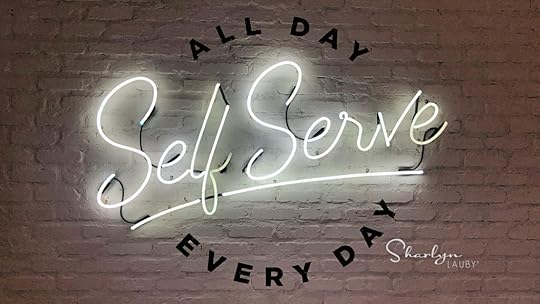
We’re all reading the same headlines right now about working from home. I’m seeing lots of companies announce that employees will be able to work from home indefinitely. Which is fine. Employee safety is important. However, this decision has an impact on learning and development.
In a traditional office environment, employees might go to a classroom training session or attend a conference. Now self directed learning will happen virtually. That’s not bad. It is different. Specifically, in terms of how an employee communicates what they learned.
A couple of years ago, I wrote about Debra Cohen’s book “Developing Proficiency in HR: 7 Self-Directed Activities for HR Professionals”. In it, she talks about developing a “career portfolio”. Don’t let the mention of HR in the title make you think this is an HR book. While it does talk about the HR competency model, the concept of a career portfolio can apply to anyone.
I like to think of career portfolios as something similar to a graphic artist’s portfolio. It’s a place – either physical or digital – where someone can keep their career-related accomplishments. The portfolio can remind us of our learning accomplishments especially when we’re having conversations with our manager about goals, career aspirations, etc.
Cohen has a new book out titled, “Developing Management Proficiency: A Self Directed Learning Approach”. Personally, I can’t think of a better time to be talking about self directed learning. It’s always been important but given COVID-19, even more so now. Employees working from home have to find ways to continue learning. Individuals who have been furloughed or are looking for a new opportunity have to keep their skills relevant.
Just to make sure we’re on the same page, self directed learning is when a person takes the initiative for their learning needs. It includes developing learning goals, identifying learning resources, and committing to the learning actions. The book has two activities that everyone should consider doing:
QUIZ: Are you a self-directed learner? This very straightforward quiz allows you to think about where you are on the self directed learning continuum. That could be very helpful information as you consider your future learning plans.Competency Self-Assessment: This book focuses on management competencies like communication, collaboration, problem-solving, etc. IMHO, those are competencies that all of us should continuously work on. So, this self-assessment would be relevant to anyone.
The book then delves into using networking, role playing, questioning, journaling, and observation as learning activities.
I thought of the “Developing Management Proficiency” book as sort of a prequel to the “Developing Proficiency in HR” book. Employees could develop their own learning plans and, when completed, add them to their career portfolio. Organizations could have employees read “Developing Management Proficiency” as part of a book club and find out what types of activities they might like to see the company help them with. It can be used as a way to encourage learning and engagement.
One of the things that organizations must resist is to cut the learning and development budget during uncertain times. Organizations still compete by having the best talent. That involves learning. And today it means self directed learning.
The post How to Develop a Plan for Self Directed Learning appeared first on hr bartender.






August 13, 2020
Employees: How to Complete Your Self Appraisal

Whether you’re working from home or in an office, performance reviews are going to happen at some point. I’m a fan of asking employees to complete a self appraisal as part of the overall process. So, while the manager is working on their performance appraisal, the employee should be doing the same.
Before we get into the focus of today’s article – which is how employees should complete their self appraisal – let’s talk about a few things that organizations should do before the self appraisal time arises.
New hires should get a copy of the company’s performance appraisal form. HR should explain the performance management process. The employee’s manager should explain the rating system. Employees need to know how their performance is being measured.
Current employees should receive a copy of their performance reviews. There are two reasons for this: first, employees will want to look at their last review when preparing their self appraisal and second, reviews often have goals written on them and this is a good way for employees to keep their goals top of mind.
When it comes time to start the performance review process – whether that happens for all employees at the same time of the year or staggered by their anniversary dates – managers will want to make sure that employees have a blank copy of the review form as well as a copy of their last review on file. Managers should explain to employees the process, set a date/time for their performance review meeting, and answer any questions.
Now, that we’ve covered what the organization should do. Here are some suggestions for employees on how to complete their self appraisal.
Review your last appraisal. Note where you’ve made improvements. Also take note of any areas where you haven’t completely accomplished expectations. Read the blank review form. Make sure you understand all of the categories (or competencies) that your performance is being evaluated, along with the rating scale being used. Rate yourself in each category. For every rating outside a “3 – Meets Standard”, prepare at least two stories or examples to support your rating. One incident should not move the needle (positively or negatively) that’s why I’m suggesting two stories.Look at your calendar. Or your career portfolio. Make sure you didn’t miss any opportunities to showcase your accomplishments!Draft 3-5 goals for the upcoming review year. These goals should align with your strengths and opportunities for improvement. They might be different from work or project goals. And be open to them being edited by your manager.Finally, draft some comments. Be succinct and specific about your work. Use good action verbs. This is your opportunity to talk about your responsibilities and what you would like to accomplish in the future.
Even if your organization doesn’t have a formal self appraisal process, this is a great way for employees to prepare for their performance review conversation. Managers should want employees to enter that discussion prepared to talk about what they’ve done and would like to do. A good performance conversation helps the employee achieve their career goals and improve their productivity. All of which is good for the organization.
Image captured by Sharlyn Lauby after speaking at the Flora Icelandic HR Management Conference in Reykjavik, Iceland
The post Employees: How to Complete Your Self Appraisal appeared first on hr bartender.






Sharlyn J. Lauby's Blog
- Sharlyn J. Lauby's profile
- 10 followers



